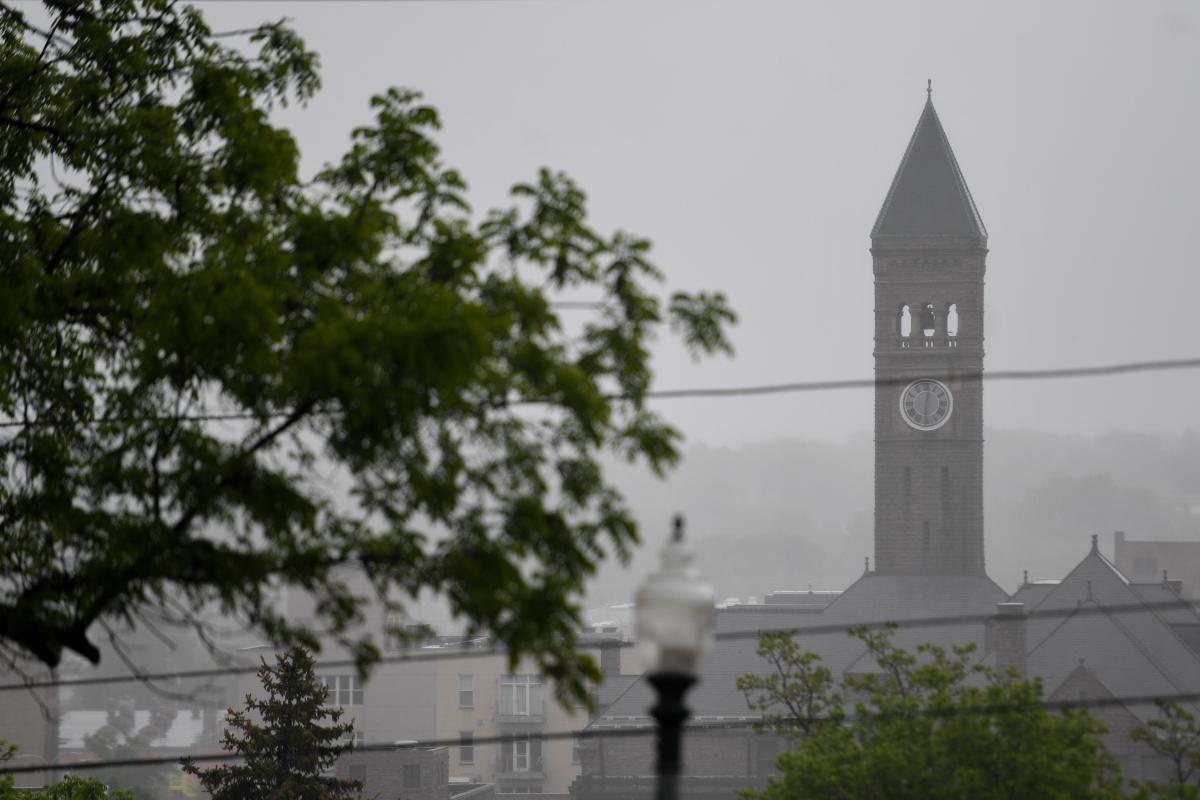A recent analysis has found that Sioux Falls weather forecasts are only accurate one day out, among the worst in the nation.
The Washington Post published an analysis of government data July 2, measuring how many days into the future the National Weather Service’s forecast of the daily high temperature is accurate within 3 degrees Fahrenheit
But Peter Rogers, the Warning Coordination Meteorologist at the Sioux Falls National Weather Service,, says much of the predictability has to do with location and landscape.
“When you look at just Sioux Falls or the upper Midwest and northern plains, we live in a land of extremes,” Rogers said. “When you’re talking about predictability, and you have those kind of ranges, that makes forecasting more challenging.”
Rogers said a major reason for the difference in forecast accuracy between the Midwest and the coasts is the ocean, which has a moderating effect on the weather and temperature. Moderate temperatures are easier to predict. For example, The Washington Post found that weather forecasts are accurate at least seven days out in Miami.
Without moderating factors, the inner portions of the continent tend to have more extreme temperatures than the coasts, Rogers said. The Sioux Falls record high temperature is 110 degrees Fahrenheit, while the record low is -42 degrees Fahrenheit.
More: Hurricane Beryl damage in Texas led to 911 outages statewide in South Dakota. How?
How does the NWS create its forecasts?
Each day, meteorological observations are brought into a NWS computer forecast model in what’s called an initial state, according to Rogers. Using mathematical equations, that initial state is pushed forward into the future to show the movement, magnitude and speed of air masses. Those changes are often the causes of weather, Rogers said.
“When we’re making a weather forecast, we’re looking at several different forecast models and trying to delineate which ones are more accurately representing the state of the atmosphere,” he said.
Rogers said that Sioux Falls tends to have larger, more unpredictable variations in temperature during the winter and during transition seasons, when temperatures go from cool to warm or warm to cool.
What role does technology play in forecasting?
Weather monitoring has improved along with technology. According to The Washington Post, current seven-day forecasts are as accurate as three-day forecasts of the 90s. However, Rogers says, even with improvements in technology, the role of the human forecaster is critical.
“Our mission here at the weather service is the protection of life and property, so we want to make sure that forecast is as accurate as it can be,” Rogers said. “We will make adjustments to it as necessary if the models are pushing it in the wrong direction.”
More: One couple’s dilemma: Floods devastate house, force evacuation, but no emergency funds yet
This past winter, Rogers said the NWS had cases where forecasters realized there was potential for some areas to get much more snow than models had predicted. The NWS adjusted its alert messages and forecasts to predict more precipitation, because more snow would have a larger impact on Sioux Falls residents’ lives.
“When you’re talking about travel considerations, or if you’re needing to cancel a certain kind of activity, those differences make a big, big difference,” he said. “Those are the kind of things we’re looking for.”
Rogers said that the weather is dynamic and always changing. If Sioux Falls residents are trying to make decisions based off a weather forecast, he said, it’s always best to come back and check the forecast again for the most updated information.
This article originally appeared on Sioux Falls Argus Leader: Sioux Falls weather forecasts only accurate a day out, analysis finds



